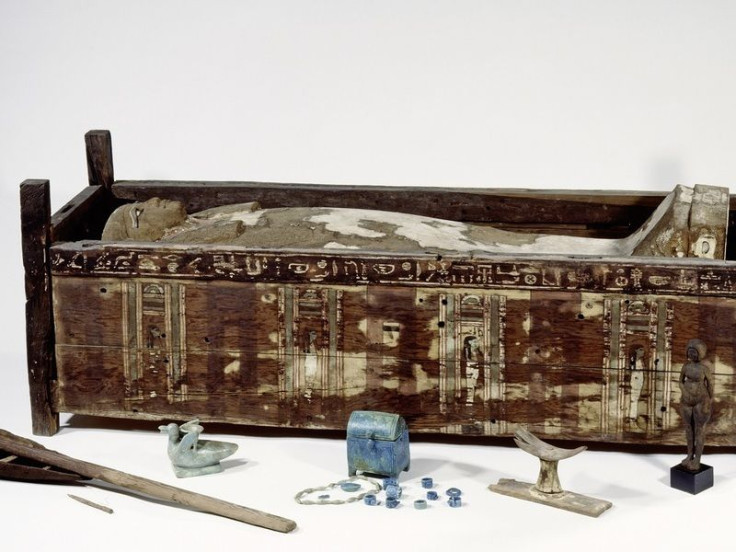DNA From Ancient Egypt Mummies Shows More Ties To Asia Than Africa

Modern-day Egyptians are living on the same land as their ancient counterparts, but that doesn’t make them the same: Scientists who analyzed the genes of mummies from ancient Egypt say the people in that civilization were more closely related to people from western Asia than today’s Egyptians, who have substantially more genetic influence from sub-Saharan Africa.
For their project, the researchers managed to extract DNA from dozens of mummies, the remains of people whose lives spanned 1,300 years in the civilization’s history. The oldest mummies were from the New Kingdom, some 3,500 to 3,000 years ago, and the relatively newer ones from the Roman Period, which began with the Roman conquest of that society shortly before the Common Era.
A study in Nature Communications found the analysis gives us a greater glimpse into the lives of the famous ancient society that flourished for so many generations, adding to evidence from literature and archaeological artifacts that can help paint a picture but have their limitations.
Read: Archaeologists Found 17 New Mummies From Ancient Egypt
“Owing to its rich natural resources and strategic location on the crossroads of continents, the country had intense, historically documented interactions with important cultural areas in Africa, Asia and Europe, ranging from international trade to foreign invasion and rule,” the study says. “The movement of people, goods and ideas throughout Egypt’s long history has given rise to an intricate cultural and genetic exchange and entanglement.”
The mummy DNA was specifically linked to the archaeological site Abusir el-Meleq, which is along the Nile River just south of Cairo. Because of its geographically narrow source, the researchers acknowledged their findings may hold true for only those who lived in that area, as opposed to all of ancient Egypt.

“It is possible that populations in the south of Egypt were more closely related to those of Nubia and had a higher sub-Saharan genetic component,” the study says. “Throughout pharaonic history, there was intense interaction between Egypt and Nubia, ranging from trade to conquest and colonialism, and there is compelling evidence for ethnic complexity within households with Egyptian men marrying Nubian women and vice versa. Clearly, more genetic studies on ancient human remains from southern Egypt and Sudan are needed.”
The Max Planck Institute for the Science of Human History, which had researchers working on the project, noted there was a reason the team chose Abusir el-Meleq inhabitants for genetic analysis in particular, and for staying within a singular location as opposed to looking all over ancient Egypt: to see if the population that lived there would show evidence of foreign interactions, including conquests, affecting DNA over time.
Read: Is This a New Egyptian Pyramid?
“We wanted to test if the conquest of Alexander the Great and other foreign powers has left a genetic imprint on the ancient Egyptian population,” co-lead author Verena Schuenemann of the University of Tuebingen said in the Max Planck Institute’s statement.
It turns out the ancient Egyptians held their own — the researchers did not find any big genetic shifts during the time period they studied.
Since modern Egyptians have about 8 percent more sub-Saharan DNA than their ancient counterparts, it’s likely that genetic infusion happened after the timeframe of the study, perhaps within the last 1,500 years.
DNA has been used more and more to learn about the genetics of ancient peoples and how they are related to those alive today. Recent studies, for example, have connected native tribes living in the American Northwest and in Australia to the ancient migrants who settled those areas thousands of years ago.
© Copyright IBTimes 2024. All rights reserved.





















